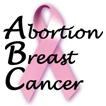Analysis of Flawed Study
Medical Journal: Flawed Study Underestimated Breast Cancer Risk of Abortion
Coalition on Abortion/Breast Cancer Urges Journalists to Hold Researchers' Feet to the Fire
An article published on Friday in the Journal of American Physicians and Surgeons 1 identifies serious flaws in a recent study on the abortion-breast cancer link by Karin Michels and her colleagues at Harvard. [http://www.jpands.org/vol12no2/brind.pdf]
Michels et al. reported a 1.01 hazard ratio for women who had one or more abortions; and they focused exclusively on only one of two breast cancer risks of abortion - the debated risk (the independent link), not the recognized risk (loss of the protective effect of childbearing). 2
The article by Professor Joel Brind of the Breast Cancer Prevention Institute said that the Michels team included flaws in their study, which caused an underestimation of the risk of abortion, such as:
- Insufficient follow-up time between exposure to abortion and the development of breast cancer;
- Exclusion of in situ breast cancers, which develop earlier than do invasive breast cancers;
- Misrepresentation of the published record concerning reporting bias; Even Michels' earlier research found no evidence of reporting bias; 3 and
- Failure to adjust for confounding factors.
Brind added that the study "fits a pattern that is disturbingly familiar." In 2005, he reviewed 10 studies that are used to discredit the abortion-cancer link and concluded they are also seriously flawed. 4 No expert has challenged his conclusions.
Brind concluded that if Michels et al. would analyze their data properly, they would likely find an odds ratio in the range of 1.2-1.5. Their results would be consistent with that of the Brind-Penn State team's 1996 review and meta-analysis. 5
"Women are dying because of scientists' misconduct and ideological bias,"
said Karen Malec, president of the Coalition on Abortion/Breast Cancer. "We challenge journalists to hold researchers' feet to the fire by demanding a proper analysis of the data."
- 1. Brind J. Induced Abortion and Breast Cancer Risk: A Critical Analysis of the Report of the Harvard Nurses Study II. Journal of American Physicians and Surgeons (Summer 2007) Vol. 12, No. 2, p. 38-39. Available at: http://www.jpands.org/vol12no2/brind.pdf.
- 2. Michels K, Xue Fei, Colditz G., Willett W. Induced and Spontaneous Abortion and Incidence of Breast Cancer Among Young Women. Arch Int Med 167:814-820.
- 3. Lipworth L, Katsouyanni K, Ekborn A, Michels KB, Trichopoulos D. Abortion and the risk of breast cancer: a case-control study in Greece. Int J Cancer 1995;61:181-184.
- 4. Brind J. Induced abortion as an independent risk factor for breast cancer: A critical review of recent studies based on prospective data. J Am Phys Surg Vol. 10, No. 4 (Winter 2005) 105-110. Available at:
http://www.jpands.org/vol10no4/brind.pdf. - 5. Brind J, Chinchilli, VM, Severs WB, Summy-Long J. Induced abortion as an independent risk factor for breast cancer: a comprehensive review and meta-analysis. J Epidemiol Community Health 1996;50:481-496.



